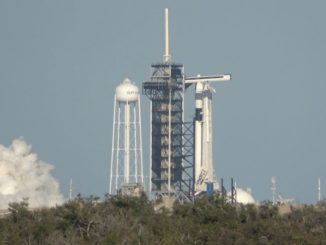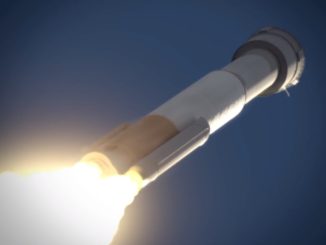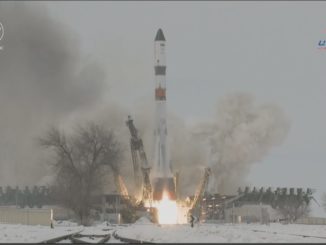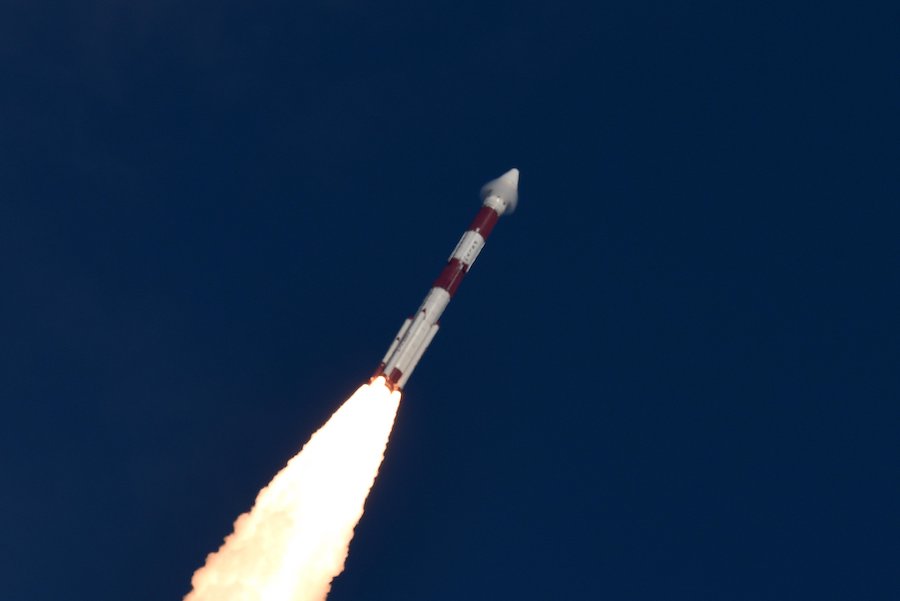
The 50th flight of an Indian Polar Satellite Launch Vehicle delivered 10 spacecraft from five nations into orbit Wednesday, including a new Indian radar surveillance platform and a batch of small commercial Earth observation satellites.
The 144-foot-tall (44.4-meter) launcher lifted off with some 1.7 million pounds of thrust at 4:55 a.m. EST (0955 GMT) from the Satish Dhawan Space Center, a spaceport located on Sriharikota Island on India’s southeastern coast with the Bay of Bengal.
Flying in a configuration with four strap-on solid rocket boosters, the PSLV flew southeast from Sriharikota and jettisoned its solid-fueled boosters and core stage motor in the first two minutes of the flight. A hydrazine-fueled Vikas second stage engine ignited next, followed by a burn of the PSLV’s solid-fueled third stage, and ignition of two thrusters on the rocket’s fourth stage to inject 10 satellites into orbit.
Telemetry data and live video downlinked from the rocket showed the PSLV flying on course, and officials from the Indian Space Research Organization — India’s space agency — said the launcher delivered its payloads into an on-target orbit.
The PSLV’s guidance system aimed to inject the satellites into a 357-mile-high (576-kilometer) orbit inclined 37 degrees to the equator.
Live imagery beamed back to Earth from the rocket showed India’s RISAT 2BR1 radar observation satellite separating from the PSLV’s fourth stage around 16-and-a-half minutes into the mission. In the next few minutes, the PSLV jettisoned a dual-payload adapter structure and ejected nine other small satellites into space.
ISRO officials declared the launch a success, marking the end of India’s sixth and final space launch of 2019. All were successful.
Wednesday’s PSLV flight occurred two weeks after India’s last PSLV mission from the spaceport at Sriharikota.
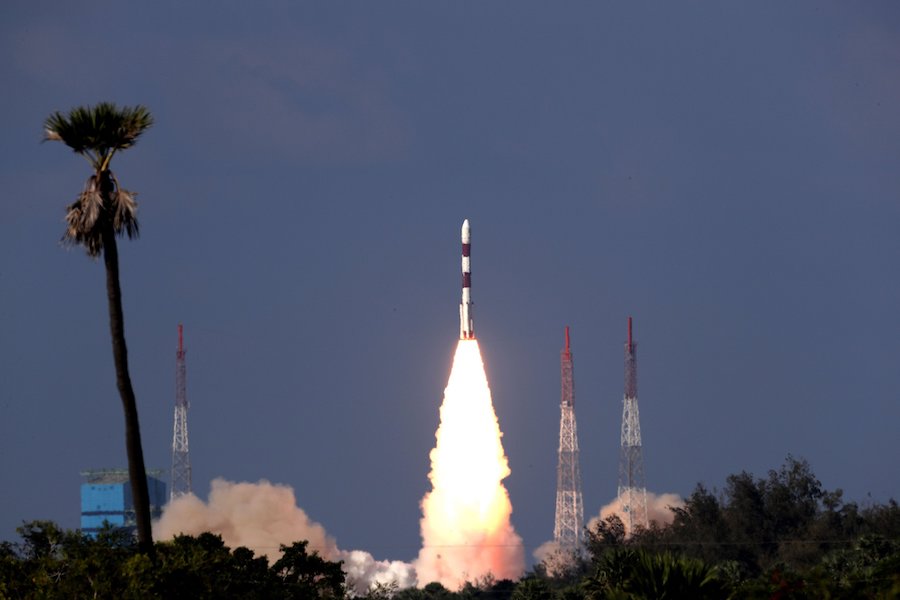
“Along with the 50th historic mission for PSLV, this mission marks another major milestone,” said K. Sivan, ISRO’s chairman. “This is the 75th launch from the spaceport of India (at Sriharikota).”
The PSLV’s first mission lifted off from Sriharikota on Sept. 20, 1993, but failed to reach orbit after encountering a problem during separation of the rocket’s second and third stages. The PSLV’s only other launch failure occurred Aug. 31, 2017, when the rocket’s payload shroud did not jettison, preventing the rocket from placing an Indian navigation satellite into orbit.
“PSLV has hit gold today,” said S. Somanath, director of the Vikram Sarabhai Space Center, headquarters for ISRO’s launcher development programs. “This is one of the important milestones in the history of PSLV.”
ISRO originally developed the PSLV to carry Indian Earth observation satellites into low Earth orbit and end Indian reliance on foreign launchers for many missions. But Indian engineers have nearly doubled the PSLV’s original launch mass capacity since 1993, and the PSLV has flown in five different configurations with zero, two, four, or six strap-on boosters. The first variant of the PSLV launched with smaller solid rocket boosters than the strap-on motors used today.
Engineers have also introduced a new capability to reignite the PSLV’s fourth stage and outfit it with solar panels for extended missions.
The upgrades have allowed the PSLV to launch satellites into high-altitude geostationary transfer orbit. India’s first orbiters to reach the moon and Mars also launched on PSLV flights.
The relative low cost and high reliability of the PSLV have made it a popular choice to launch small satellites from foreign companies and research institutions.
The PSLV holds the record for the highest number of satellites launched on a single rocket, a mark set in 2017, when 104 spacecraft rode a PSLV into orbit. Planet, the U.S. company that operates a network of more than 100 Earth-observing CubeSats, had 88 of its Dove remote sensing nanosatellites on the rocket.
Sivan said the 50 PSLV missions to date have launched more than 116,000 pounds (52.7 metric tons) of payloads into space. About 17 percent of the mass launched by the PSLV missions to date have been from customer payloads.
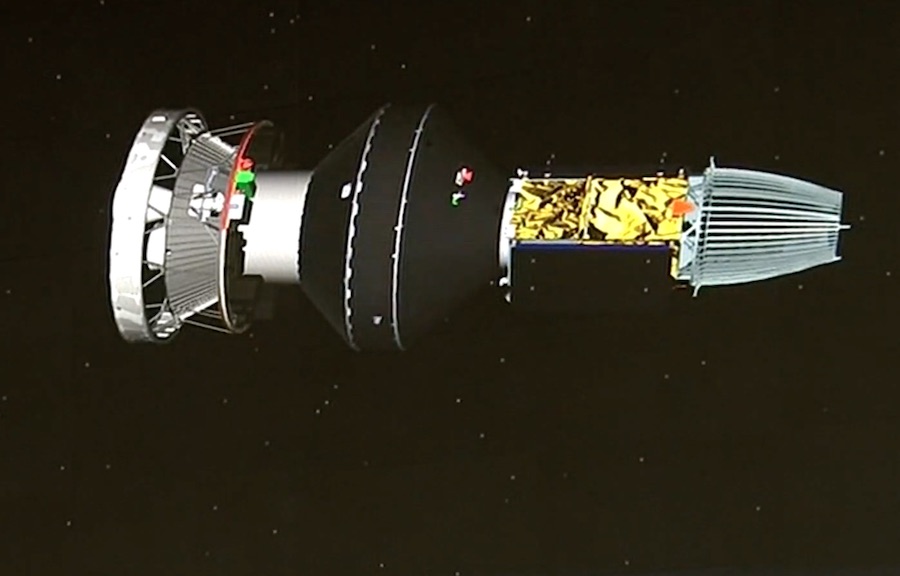
India’s 1,384-pound (628-kilogram) RISAT 2BR1 radar observation satellite was the largest payload on Wednesday’s PSLV mission. Officials confirmed the spacecraft extended its power-generation solar panels as planned shortly after launch.
RISAT 2BR1 follows the launch of a similar radar imaging satellite launched by India in May. A third RISAT 2B-series spacecraft is scheduled for launch on a future PSLV flight in early 2020.
The radar-equipped satellites work in concert with India’s fleet of optical reconnaissance satellites. India launched the first in a new generation of Cartosat 3 Earth-imaging spacecraft last month.
Designed for a five-year mission, RISAT 2B carries an X-band radar imaging instrument capable of resolving structures and features on Earth’s surface, regardless of daylight or weather conditions. Earth-looking optical telescopes are inhibited by cloudy weather, and only produce usable imagery during daytime.
The satellite was developed by ISRO and carries a dish-shaped radar antenna that is folded up to fit inside the rocket’s payload compartment. Once the satellite is in space, its radial band antenna will be unfurled to its full diameter of 11.8 feet (3.6 meters).
The spacecraft will supply 2 kilowatts of power to the radar instrument, which is able to collect imagery in spotlight, strip and mosaic modes. The imaging resolution of RISAT 2BR1’s radar has not been disclosed by ISRO.
According to an information kit released by ISRO, RISAT 2BR1 will provide imagery to support applications in agriculture, forestry and disaster management.
Orbiting radars can also detect features, such as camouflaged military assets, on the ground that can escape detection with optical Earth observation satellites. The enhanced observing capability of radar satellites makes them useful for military and intelligence agencies.
“This spacecraft is an excellent space asset, which will contribute for national security, agriculture, forestry, agriculture, disaster management, and a host of applications,” said R.V. Nadagouda, the RISAT 2BR1 spacecraft director.
The 37-degree inclination orbit selected for the RISAT 2BR1 satellite does not provide global radar observation coverage, but it offers regular passes over Indian territory and neighboring Pakistan, a longtime strategic rival to India in the region.
Nine other small satellites from U.S., Israeli, Italian and Japanese companies hitched a ride on Wednesday’s PSLV flight.
The QPS-SAR 1 satellite, weighing roughly 220 pounds (100 kilograms), was built by iQPS, a Japanese company aiming to field a fleet of 36 small radar satellites to enable near-real-time observations of the Earth. QPS-SAR 1’s deployable synthetic aperture radar is the same 11.8-foot (3.6-meter) size of the instrument on India’s RISAT 2BR1 satellite, but the radar fits on a much smaller spacecraft.
According to iQPS, the new spacecraft, nicknamed Izanagi, is Japan’s first small high-resolution radar satellite. The Earth observation network planned by iQPS is one of several commercial small satellite fleets in development in the radar-imaging sector, alongside constellations being built by the Finnish company ICEYE and U.S.-based Capella Space.
A 41-pound (19-kilogram) microsatellite developed by Hera Systems, a California-based company, also rocketed into orbit Wednesday atop India’s PSLV.
Hera’s 1HOPSat-TD satellite is a technology demonstrator for a constellation of Earth observation satellites. The tech demo satellite launched Wednesday hosts an optical imager with a resolution of approximately 3.3 feet, or 1 meter, according to Hera Systems.
Israeli high school students at the Herzliya Science Center built the Duchifat 3 CubeSat launched on Wednesday’s PSLV flight.
Two CubeSats manufactured by the U.S.-based CubeSat-builder Tyvak were also on the PSLV launch Wednesday.
One of the CubeSats, built for an unspecified Italian company, will demonstrate search and rescue communications capabilities. The other Tyvak-built nanosatellite will demonstrate space technology for NASA.
Four more Lemur-2 CubeSats for San Francisco-based Spire Global also launched Wednesday. The nanosatellites — each about the size of a toaster oven — carry payloads to track marine traffic and collect weather data.
Email the author.
Follow Stephen Clark on Twitter: @StephenClark1.

